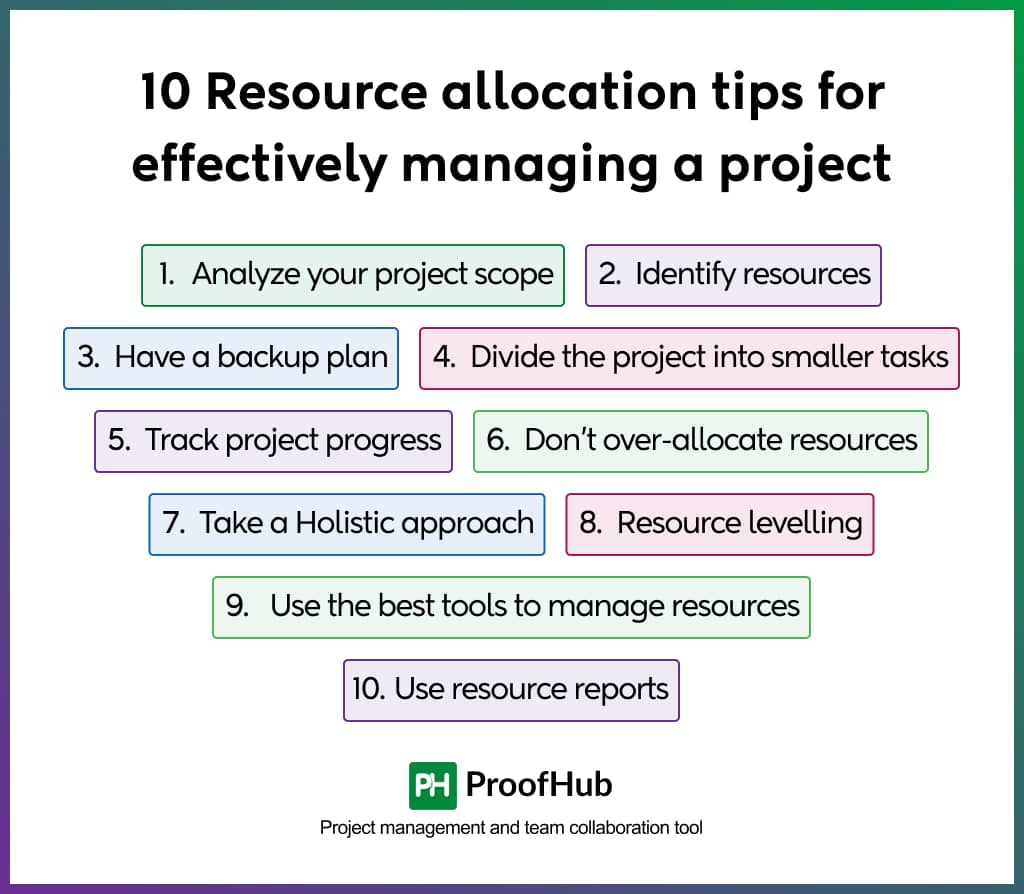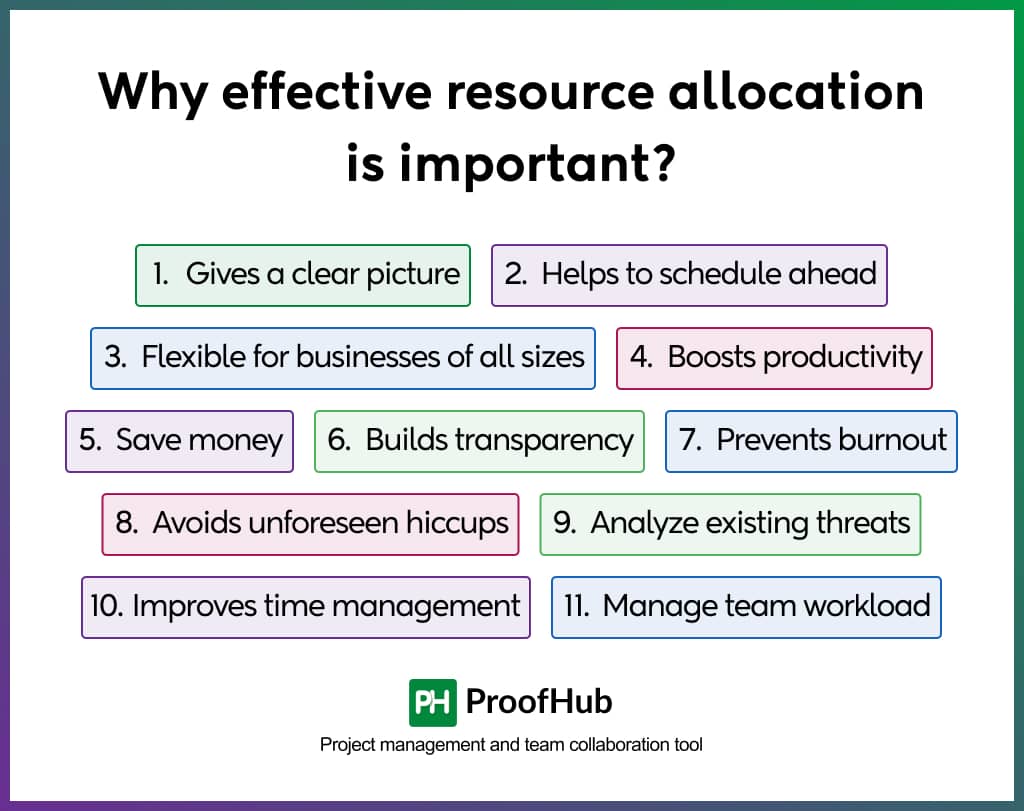In today’s extremely competitive global market setting, project managers are required to optimally utilize the resources available in hand. Effective resource allocation tips are crucial for success, Despite advanced technology and tools, many projects still fail.
So, what could be causing the downfall of projects?
Projects can fail for various reasons, such as lack of visibility into available resources, communication gaps, poor time management, or setting unrealistic expectations, which can lead to missed deadlines and budget overruns.
However, resource allocation in project management, or misallocation of resources, is often the single biggest factor to blame for failed projects.
Most organizations usually move to and fro between ‘underutilization’ and ‘overallocation’ of resources — neither of which is ideal for its efficiency. It is understood that resources are limited most of the time. However, proper resource planning and forecasting are essential for the effective use of limited, ever-scarce resources. To understand it better, we must take a detailed look at resource allocation, which is provided below.
What is resource allocation?
Even though you can find a plethora of definitions on the web, some things are best understood in simple words. As the name implies, resource allocation is a process of planning, managing, scheduling, and allocating your resources to project tasks to maximize efficiency.
“In project management, resource allocation or resource management is the scheduling of activities and the resources required by those activities while taking into consideration both the resource availability and the project time” — Wikipedia
10 Resource allocation tips for effectively managing a project
Efficient allocation of resources can be confusing as well as overwhelming for project managers. Resources are varied and there can be a long list of things to effectively allocate to the right people.

Here’s what you can do to perform a proper resource allocation when managing a project.
1. Analyze your project scope
Before you begin making a plan of what to assign and to whom, you should understand the scope of the project you’re working on. Figure out the project type and size, the ultimate goal, budget, duration, etc.
Understanding the scope can enable you to decide on the resources required for the project and their duration, allowing you to plan accordingly.
You need to understand your team and its capabilities. This will help you assign team members to your project according to their skill levels. For example, if a project involves creating a complex website, you may assign only the most experienced web developers in your team to it.
2. Identify resources
Once you define the project scope, objectives, duration, budget, and tasks necessary for timely completion within the allocated budget, it’s time to identify and gather the required resources strategically.
But that doesn’t guarantee that you’ll have a long list to choose from. Since most organizations work on multiple projects at one and the same time, you are likely to have limited resources available in the form of men, money, material, location, etc. See to it that you have the required resources to allocate.
Create a list of available and required resources and ensure they fit within the allocated budget.
3. Have a backup plan for client changes
As a project manager, you might have already experienced that most projects deviate from their original plan. Changes to the project scope, budget, or timeline can affect project delivery.
For example, your team is working on a web development project and your client suddenly wants to add new features. As a result, you should amend your allocation model such as by incorporating a couple of team members into the project to complete the task.
Project managers should always have a backup resource allocation plan for such unexpected project plan changes.
4. Divide the project into smaller tasks
Project management involves the division of tasks into subtasks, assigning them, and setting fixed budgets and deadlines for each one of them. Resource allocation is an essential part of this process because the resources are managed and allocated to each task, rather than on the project level.
The reallocation of resources at some part of the project is likely to happen. When dividing the project into tasks and subtasks, try to identify the red flags like the unavailability of a team member or task dependencies. Once the project is successfully divided into tasks, you can create alternate recovery strategies that can be used in case things don’t turn out as expected.
5. Track project progress
Resource allocation is about the effective utilization of available resources and your team’s capabilities. Measuring resource utilization can help you check how your team is doing. Keep a close eye on time tracking and the workload of employees so that tasks do not take longer than usual to complete.
You can set time estimates to define how much time it should take to get the work done. This way, you can easily identify employees who have too much (or too little) to do. Using top-rated project management software like ProofHub, Basecamp, Wrike, or Asana can help you see if your resources are allocated properly or not by comparing estimates with actuals.
If the need arises, you can reallocate resources to balance the workload.
6. Don’t over-allocate resources
Over-allocation is a killer. It happens when a resource is assigned excessive work in a given timeframe. If left unresolved, this issue can affect their stress levels, productivity, morale, the standard of work, safety at work, etc.
As a project manager, you can resolve over-allocation by — assigning additional resources, substituting resources, delaying low-priority tasks, or decreasing task duration. It’s unfair to expect resources to do more work than they are capable of handling. Adding two sugar cubes to a cup of tea won’t help where half is enough!
Similarly, under-utilization of resources can be bad for business since you’re not realizing your resources’ full potential.
7. Take a Holistic approach
It’s a common problem to get engrossed in a process to the extent that you fail to pay attention to what is happening. It is more than merely drawing comparisons between expected and actual results in the project. You should always take stock of the state of your resources.
For example, is anyone on leave, is anyone sick, what is the schedule for your team, is there enough time left for the task to be achieved, what is the duration of the lease for equipment or site? Losing even a tiny detail can result in project failure.
8. Resource leveling
Resource leveling gives a clear picture of what can be done within available resource constraints. It is a technique in which start and finish dates are adjusted by manipulating the network diagram and Gantt charts to balance the demand for resources with the availability of supplies.
Resource leveling can be used for both human and material resources. This tool is required when critical resources are available only at defined times, are over-allocated, or are in limited quantities.
For example, if John is required to work for 8 hours one day and 12 hours the next, he might need to be paid overtime thereby driving the project over budget.
9. Use the best tools to manage resources
In this tech-driven age, using the best project management software that is designed specifically for simplifying project management and enabling collaboration between teams is an efficient way to manage your resources efficiently. With all the powerful features in one centralized location, you do not need to use multiple tools from different locations to save time and money.
You can have ultimate control over the project visualize its progress and ensure every member of your team is on the same page. You can know if a task is running behind schedule and set automatic reminders to assignees about it, without having to micromanage them.
10. Use resource reports
If you don’t know where your resources are allocated then how are you supposed to re-allocate them? You might have sketched a great plan, but projects undergo changes more often than not. Reports tell you what’s happening on the ground as compared to your plans.
You can create detailed project and resource reports to visualize project progress in simple roadmap timelines and charts. You can use individual reports to analyze performance and progress across all their projects and plan ahead making the most of resource management reports.
How poor resource allocation can hurt a company big-time?
As mentioned earlier, companies that fail to effectively utilize resources end up experiencing several problems, which negatively impact their daily operations, financial status, and long-term strategies.
Here’s how poor resource management can hurt your organization.:
- Unsatisfactory department performance
- Lowered employee morale
- Poor project estimation and planning
- Low quality of work
- Wastage of money
- Waste of potential
Poor resource allocation creates an unstable and inefficient work environment. Unfortunately, not all project managers use resource allocation to their advantage. In many cases, there are no visible catastrophic results arising out of ineffective resource management, but a series of small setbacks can cause significant financial strain.
Why is effective resource allocation important?
Resource allocation in project management is all about achieving more in less. No business likes wastage of time, money, materials, and human potential. Here’s what makes efficient resource allocation such a vital part of project management.

- Provides a clear picture of the workload ahead.
- Helps to schedule ahead
- Flexible for businesses of all sizes
- Boosts productivity
- Save money
- Builds transparency
- Prevents burnout
- Avoids unforeseen hiccups
- Helps to analyze existing threats and risks to the project
- Improves time management
- Helps to manage team workload
With all the benefits of resource allocation, it’s hard to ignore its overall importance in project management to deliver a great project.
Conclusion
As you can see, effective utilization of resources is vital for the success of a business project. Planning and implementing an efficient resource allocation model can benefit your business in manifold ways. It helps to eliminate unnecessary delays in work, cope with sudden changes to scope, and keep track of the project progress to ensure you get the maximum out of limited resources. Resource allocation tips, as mentioned above in the article, underscore the importance of strategic planning and flexibility in managing resources effectively.

